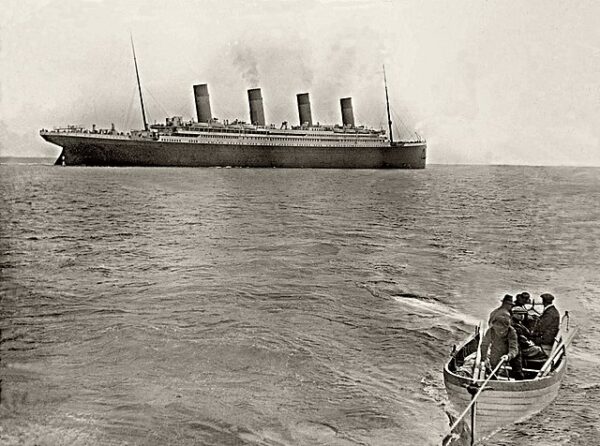On April 14-15, 1912, the RMS Titanic, a British passenger liner, struck an iceberg during its maiden voyage from Southampton to New York City. The ship, touted as “unsinkable” due to its advanced safety features, tragically sank in the North Atlantic Ocean, resulting in the deaths of over 1,500 passengers and crew.
The Titanic was a marvel of engineering, touted as the largest and most luxurious ship of its time. It was equipped with watertight compartments and advanced safety measures, but these were not enough to prevent disaster. The ship carried over 2,200 passengers and crew, including some of the wealthiest individuals of the time, as well as immigrants seeking a new life in America.
The collision with the iceberg occurred late at night, around 11:40 PM on April 14th, causing a deep gash along the side of the ship. Despite efforts to contain the flooding, the Titanic began to list and ultimately sank within a few hours. The lack of adequate lifeboats exacerbated the tragedy, as there were only enough for about half of the passengers and crew.
The chaos and confusion that ensued as the ship went down were captured in numerous survivor accounts. Passengers and crew scrambled to find lifeboats, many of which were launched only partially filled. Women and children were given priority, leading to heartbreaking scenes of families torn apart in the chaos.
The nearby ship, RMS Carpathia, responded to distress calls and arrived on the scene hours later, rescuing over 700 survivors from lifeboats and life rafts. The survivors, traumatized and grieving the loss of loved ones, were taken to New York City, where they were met with a mix of relief and disbelief at the scale of the tragedy.
In the aftermath of the sinking, inquiries were launched in both the United States and the United Kingdom to investigate the causes of the disaster and to determine responsibility. These inquiries revealed a series of errors and oversights, including the inadequate number of lifeboats, the lack of binoculars in the crow’s nest, and the failure to heed warnings about ice in the vicinity.
The sinking of the Titanic had far-reaching consequences beyond the loss of life. It led to significant changes in maritime safety regulations, including the requirement for ships to carry enough lifeboats for all passengers and crew, the establishment of an international ice patrol to monitor iceberg danger, and the implementation of stricter radio operating procedures for distress calls.
The sinking of the Titanic also had a profound cultural impact, inspiring numerous books, films, and documentaries that continue to captivate audiences to this day.
Recently, Jolt of Joyful revealed stunning new scans of the Titanic revealed what exactly happened to “the unsinkable ship.”






